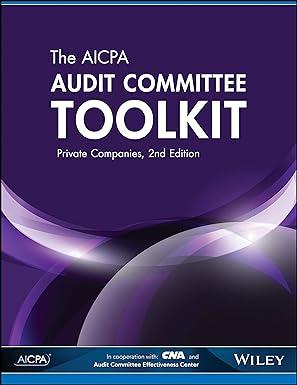Question
IF production exactly equals our budgeted estimate that we used to calculate the fixed overhead application rate, then the only difference is between actual fixed
IF production exactly equals our budgeted estimate that we used to calculate the fixed overhead application rate, then the only difference is between actual fixed overhead and applied.
However, we know that companies rarely produce exactly what they budget. Therefore, the fixed overhead has two variances:
1. Fixed overhead spending variance = (ACTUAL FOH - Budgeted FOH)
2. Fixed overhead volume variance = (Budgeted FOH - Applied FOH)
Let's look at both of these closely:
Fixed overhead spending variance:
Assume a company incurs actual overhead costs of $16,100 in a month. Budgeted fixed overhead (determined at the beginning of the year) is $15,000 per month.
The fixed overhead spending variance is = 16,100 - 15,000 = $1,100
a) The fixed overhead spending variance is:
Now assume that, at the beginning of the year, we budgeted that direct labour hours would be 30,000 per month. We used this to determine the application rate for fixed overhead (remember - we budgeted $15,000 for fixed overhead per month). Therefore, our application rate would be $15,000 / 30,000 = $0.50 / DLH. That is our budgeted (or standard) overhead application rate.
When we apply overhead we would use this application rate to calculate how much overhead to apply to each product. Do you remember how to apply overhead?
First we have to know how many units we produced: 12,000 units
Next, we have to determine the BUDGETED DLH (how many hours must employees work on this product to finish it) we allow per unit: 2 hours.
Now, what is the budgeted # of hours per unit? (12,000 units * 2 hours) = 24,000 DLH
Using that, we can calculate how much FOH to apply: (24,000 * $0.50) = $12,000
Remember: the budgeted FOH was $15,000. However, we only applied $12,000.
b) The fixed overhead volume variance is:
Step by Step Solution
There are 3 Steps involved in it
Step: 1

Get Instant Access to Expert-Tailored Solutions
See step-by-step solutions with expert insights and AI powered tools for academic success
Step: 2

Step: 3

Ace Your Homework with AI
Get the answers you need in no time with our AI-driven, step-by-step assistance
Get Started


